Bringing it Back to Life
Here is a list of the issues this 1980 Dawes Galaxy had when I bought it:
- Rear Wheel out of True
- Headset Loose
- Bottom Bracket Seized
- Hubs Bearings Rough
- Brake Calipers Loose and Untensioned
- Chain Clogged with Dirt
- Tyres Flat
- Mudguards Hopelessly Scraping Against Tyres
- Surface Rust on Frame
- Whole Bike Dirty and Requiring Thorough Clean
- Ugly Ugly Handlebar Grip
- Weinmann Brake Hoods Missing
A bike in this sort of condition needs a good two full days work of restoration. It always takes longer than you think, especially when you have to try and restore the paint and swap out the brake levers. Good quality bikes normally have a higher quality of paint which is more tolerant to the restoring techniques of cleaning and light scrubbing; in this case, the blue paint resisted the work of fine grade steel wool to try and remove the copper coloured surface rust that had grown on it.
The Impossible Task
I was never going to rid the paint of its corrosion, which had taken enough hold to inflict hundreds of little scars along the tubes. I did the best I could to remove them without cleaning through to the undercoat and further aggravating the problem. It definitely improved the whole look of the tubes, and with a good polish it began to resemble something of its former self. Actually, the decals were the most in risk of erasure in this process; Dawes may well have painted the bike with a good finish, but the decals seemed as if they were a bit of an afterthought; not great quality, and added on top of the paint, not beneath a lacquer.
Getting it on the Road
To be honest, this bike had no major mechanical problems, and its components needed little more than a good clean and a lubrication. I still don’t know the brand of the pedals, the only brand marking is 3 small squares and “Made in West Germany” stamped on the cages. Those mystery pedals are pretty light and easy to restore ( unlike the Atom 600’s ). I also like the Suntour Compe V front derailleur with its 5 holed front cage, and bizarrely is had been installed to work counter-intuitively: with the cable slack, the derailleur was in its furthermost position for the large chain ring. I managed to iron out all the little rattles and rough edges of this mostly Japanese groupset, so the bike was ready to ride.
Riding a Classic
I hadn’t ridden a bike with 27¼ rims in ages, and I’ve been used to skinny 700c rims and 19/20/22 tyres. These much thicker tyres with their knobbly tread are much more suited to the current state of the roads in Britain. It makes a huge difference to one’s riding experience, not only making the bike more comfortable on the road but also providing a safer and more secure ride. However, it’s not a light bike by any means, weighing over 26lbs with this build. Shifting was quite smooth, not as smooth as later indexed gears introduced in the mid ’80’s, but good enough to rely on with no skipping or crunching. The biggest weakness was the brakes; the centrepulls probably need some new blocks, as stopping wasn’t sharp.
Conclusions
Dawes were not building a touring bike bedecked with splendiferous parts, back in 1980. They were building a robust, functional and affordable touring bike, for people who were more interested in being out on the open road rather than parading outside a cafe. The main experience about this bike is the feeling that it is bulletproof. These Japanese parts of the day, though not as effortless as some of their European rivals, still feel tough and functional, standing the test of time. The Galaxy feels like a tourer for the common man; yes, it would be heavy on the hills and not as pretty as many French and Italian brands, but it would get the job done: riding across moor and mountain, in winter rain, it would always get you home.


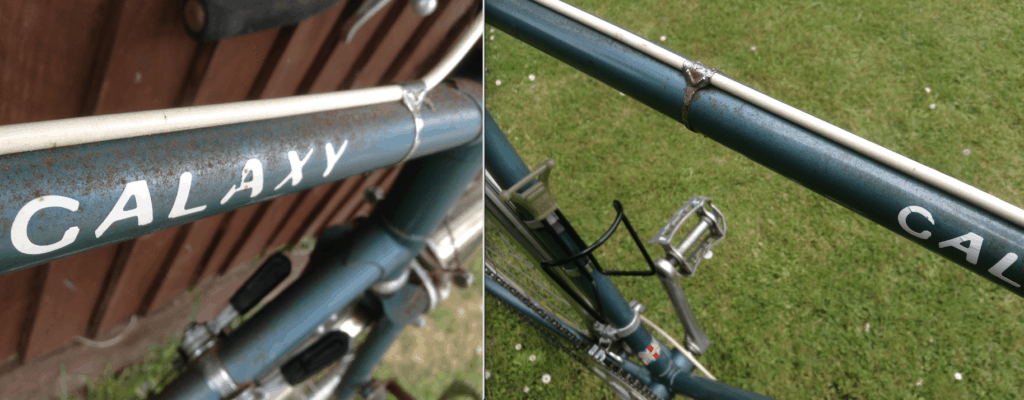
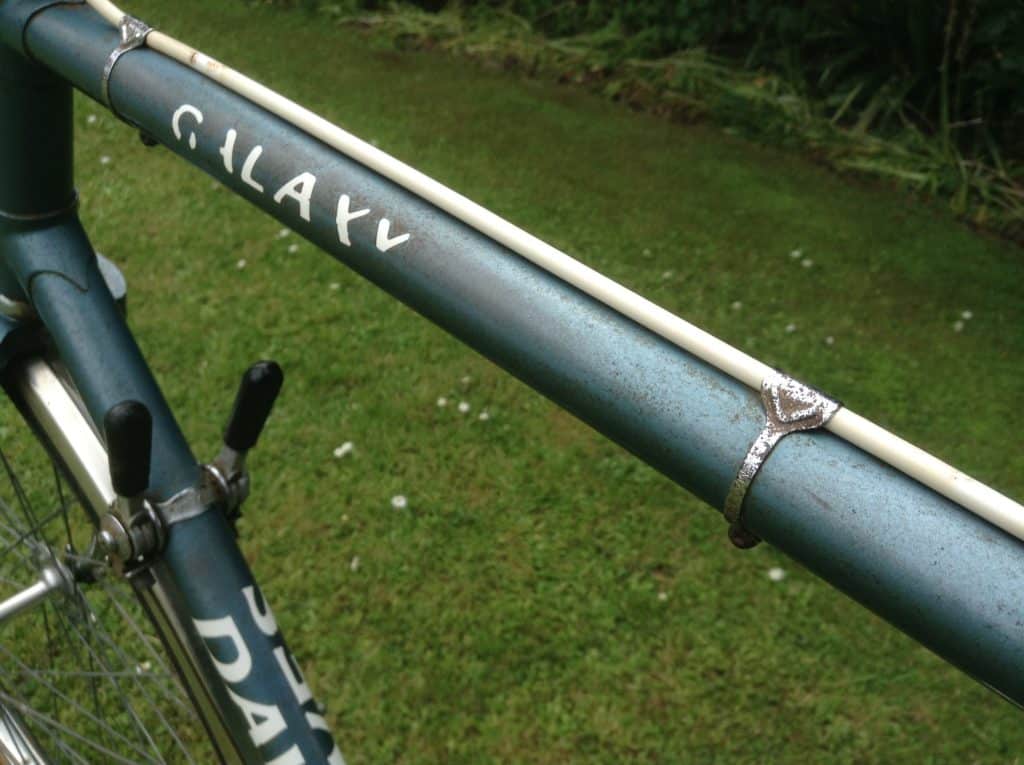
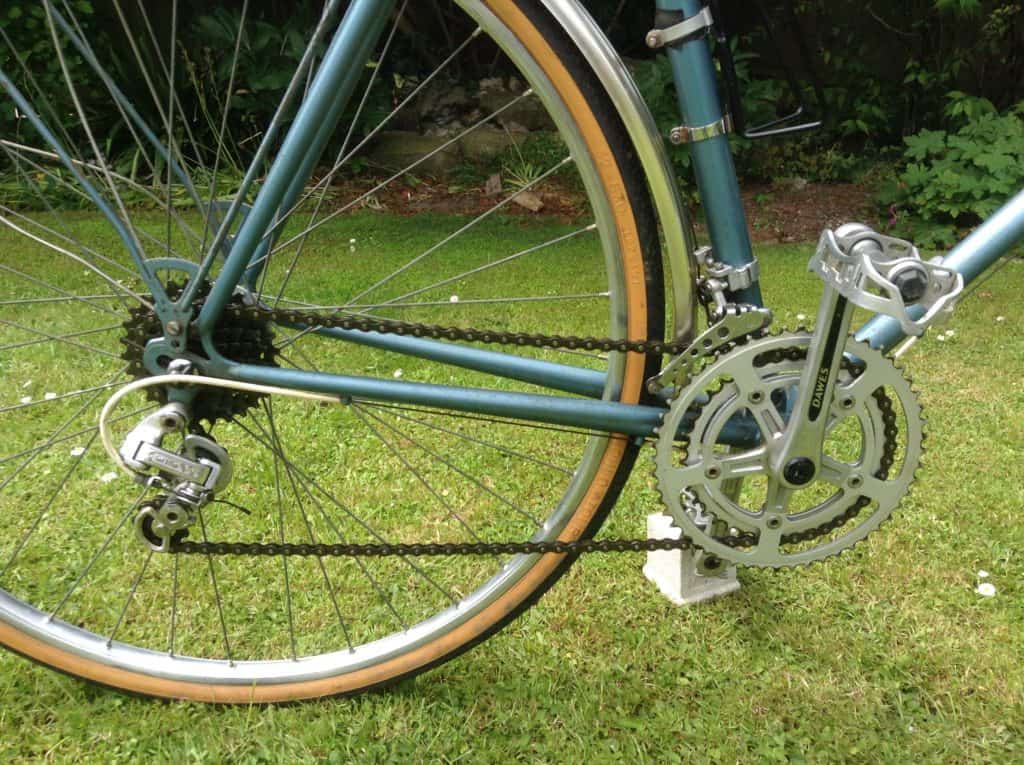
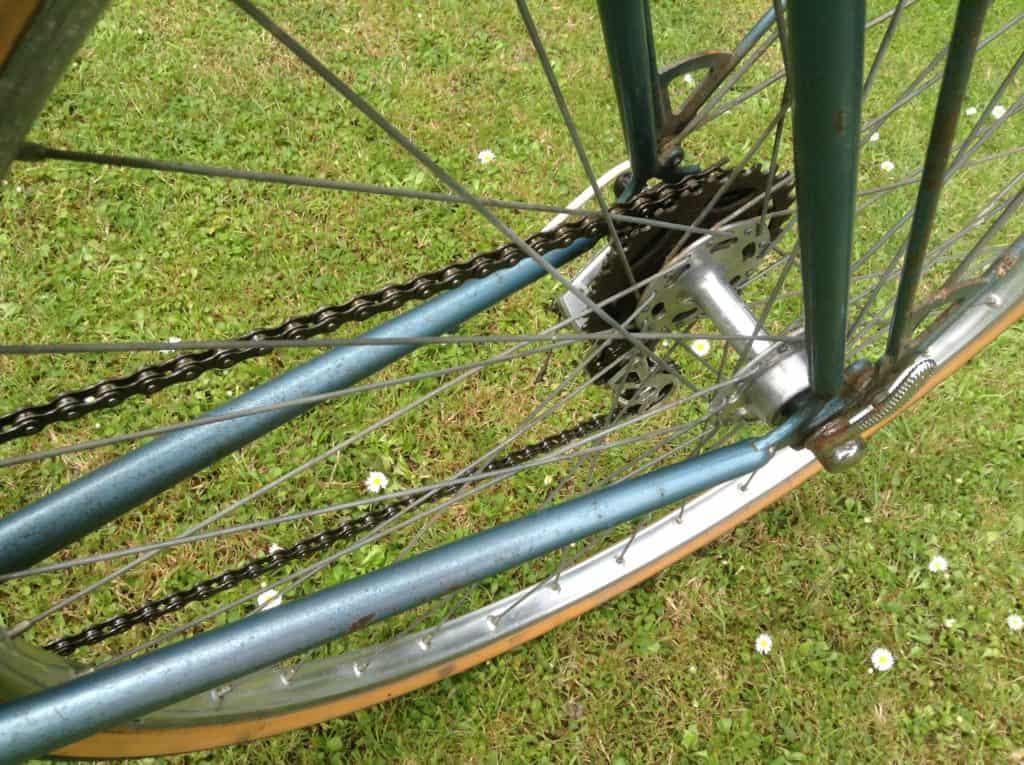
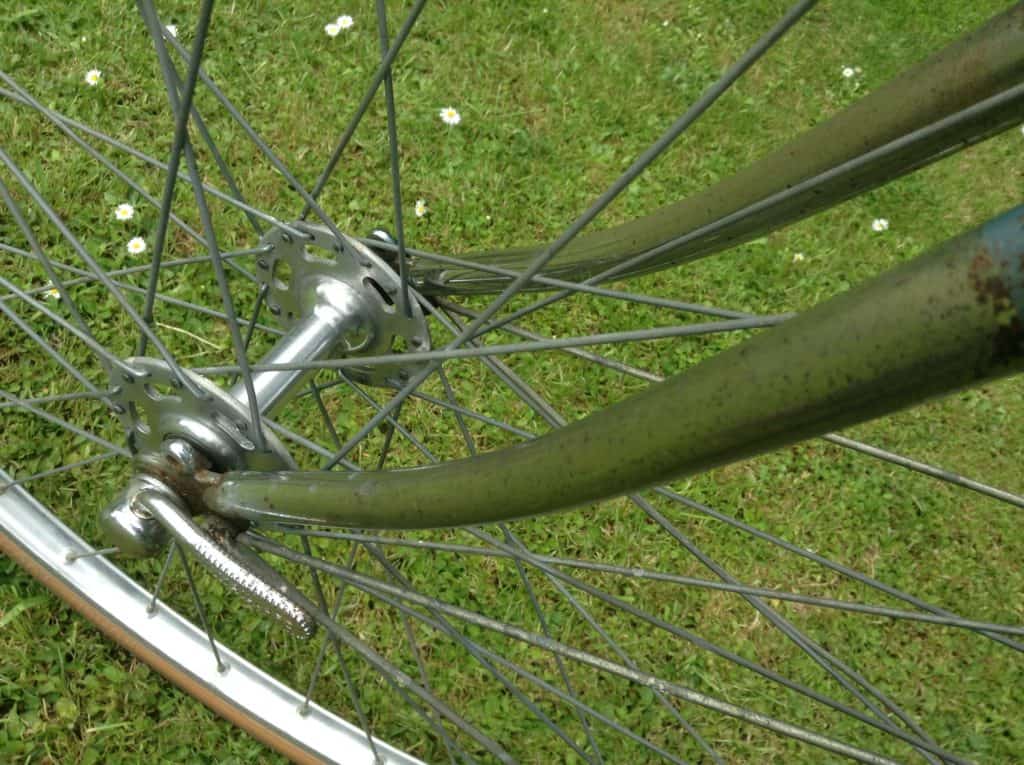
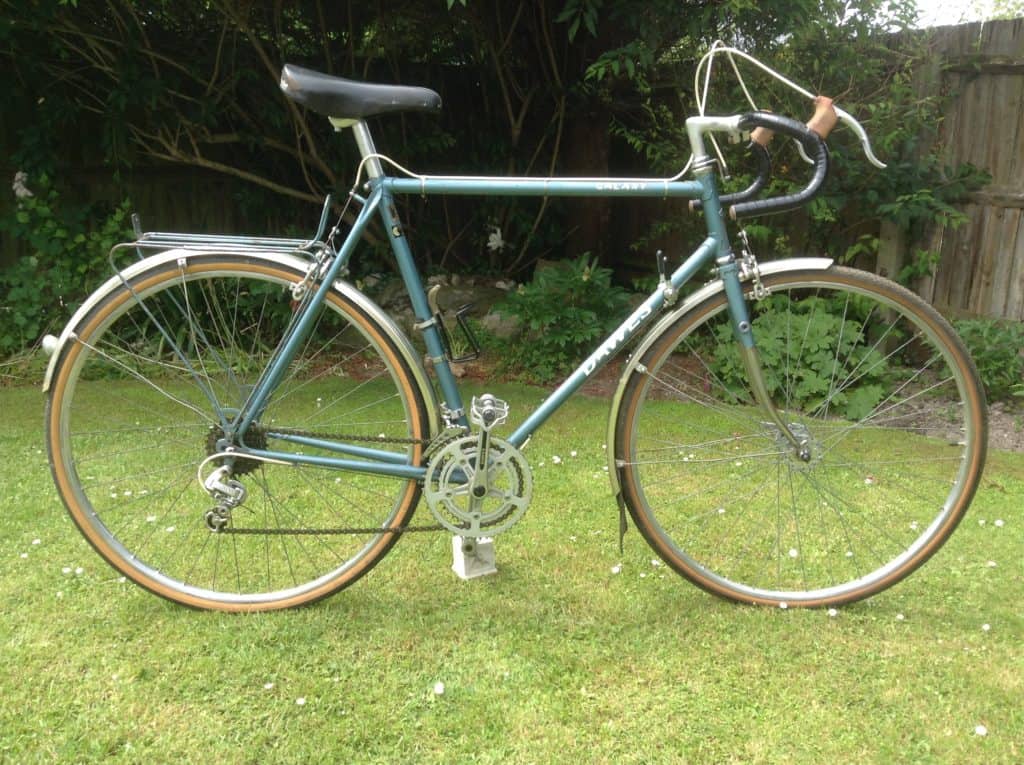
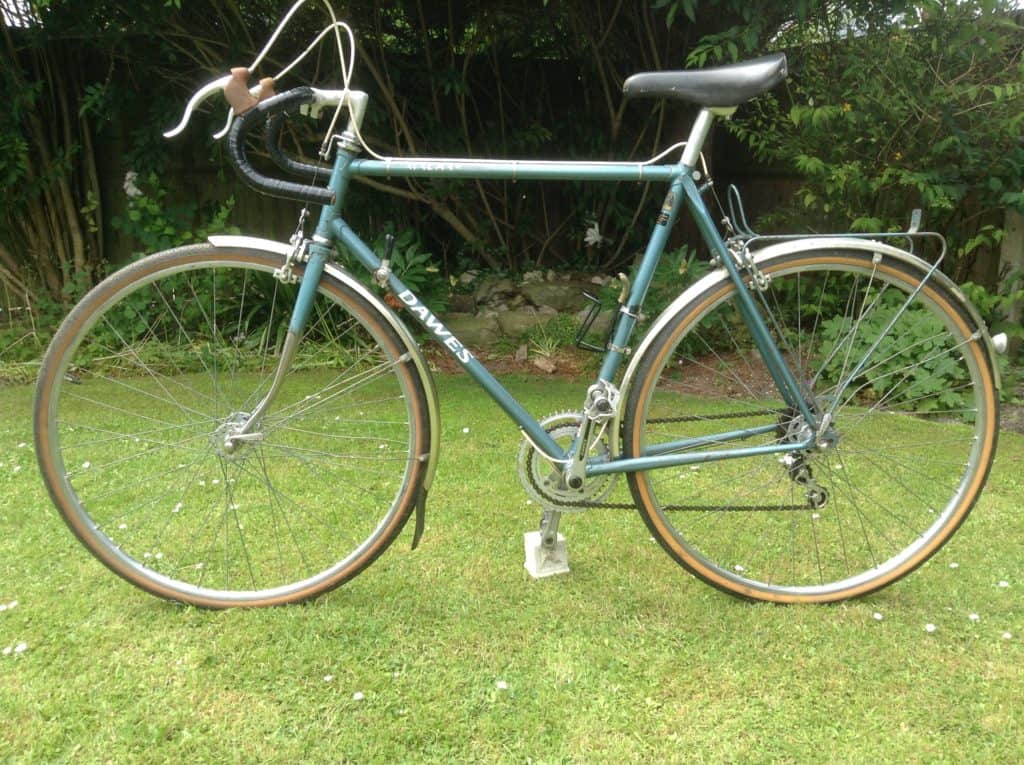
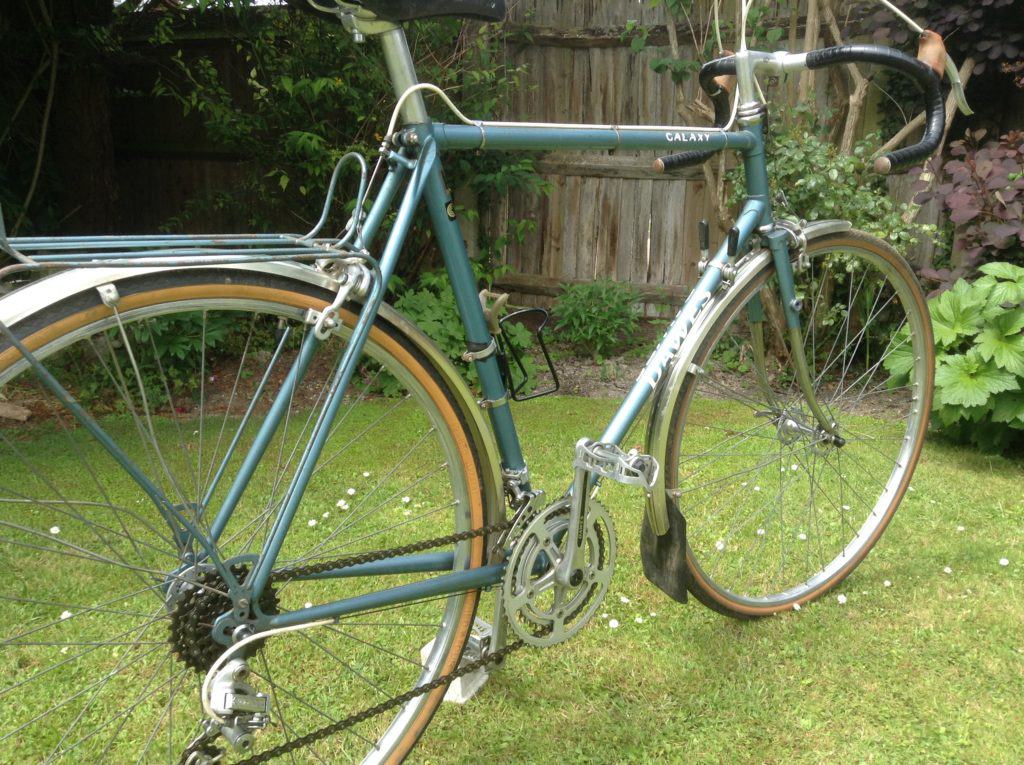
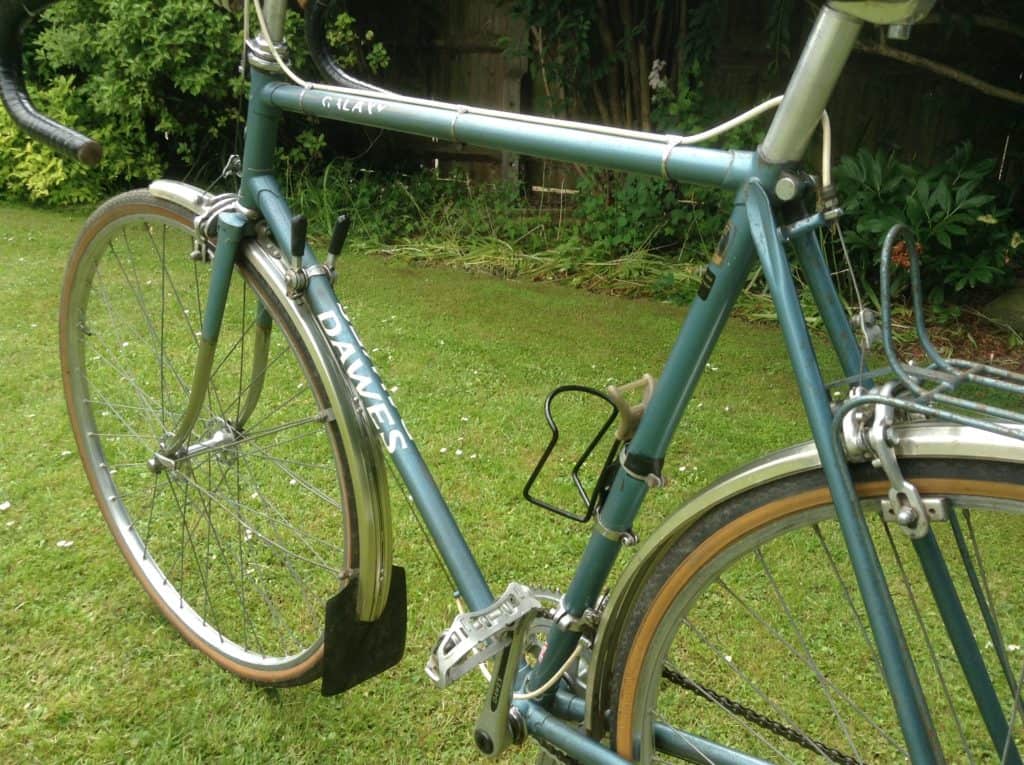
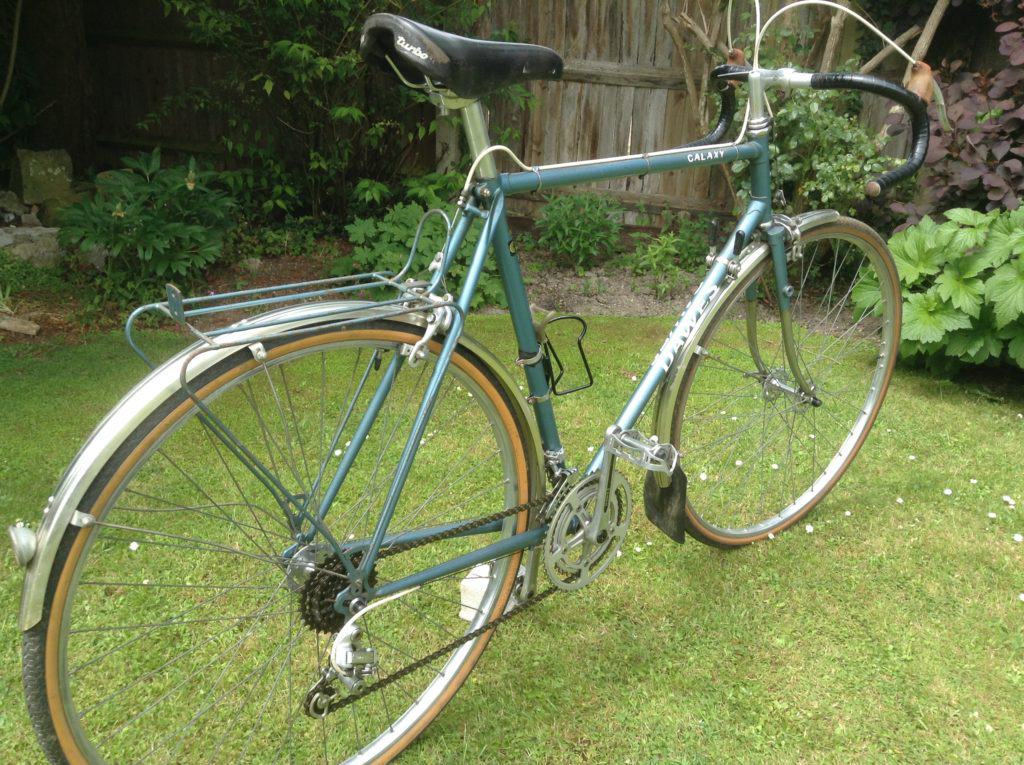
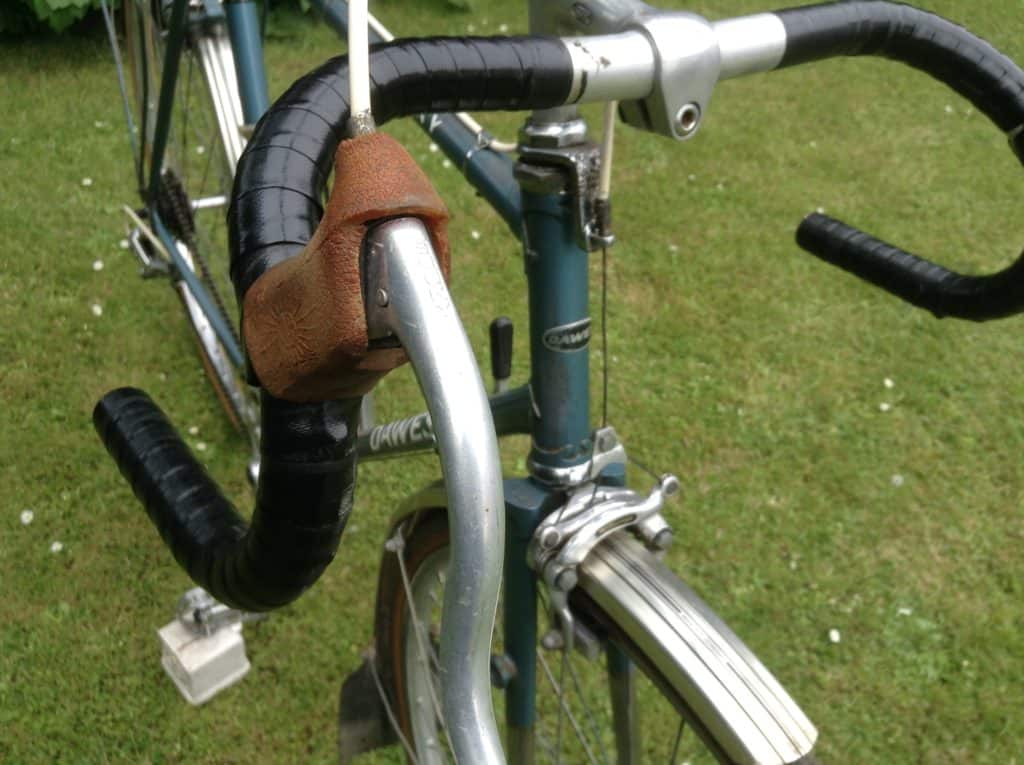
Im nearing a resto mod of a 1986 Dawes Galaxy. Its all original except for a new freewheel and chain and bar tape. Ive swapped the brake levers for some Side exiting Claud Butler, which are neater and a similar vintage. It does have a new seat. It was given to me by a customer who has lost most of his vision now.
He rode it to the Lakes and up into Scotland when he was a student. It came with front and rear pannier racks.
Stripping it down has required the use of whole can of WD40, I took a chance on a tiny tin of Humbrol ‘Midnight Blue’ enamel and it is a surprisingly good match.
I am really pleased with the imperfect results and have no intention of flipping it. I would like to hop on the ferry at Harwich and have a weekend of riding in Holland. Sweet.
Your Galaxy sounds like it was a nice project, could you share a picture of it? Thanks for your story!